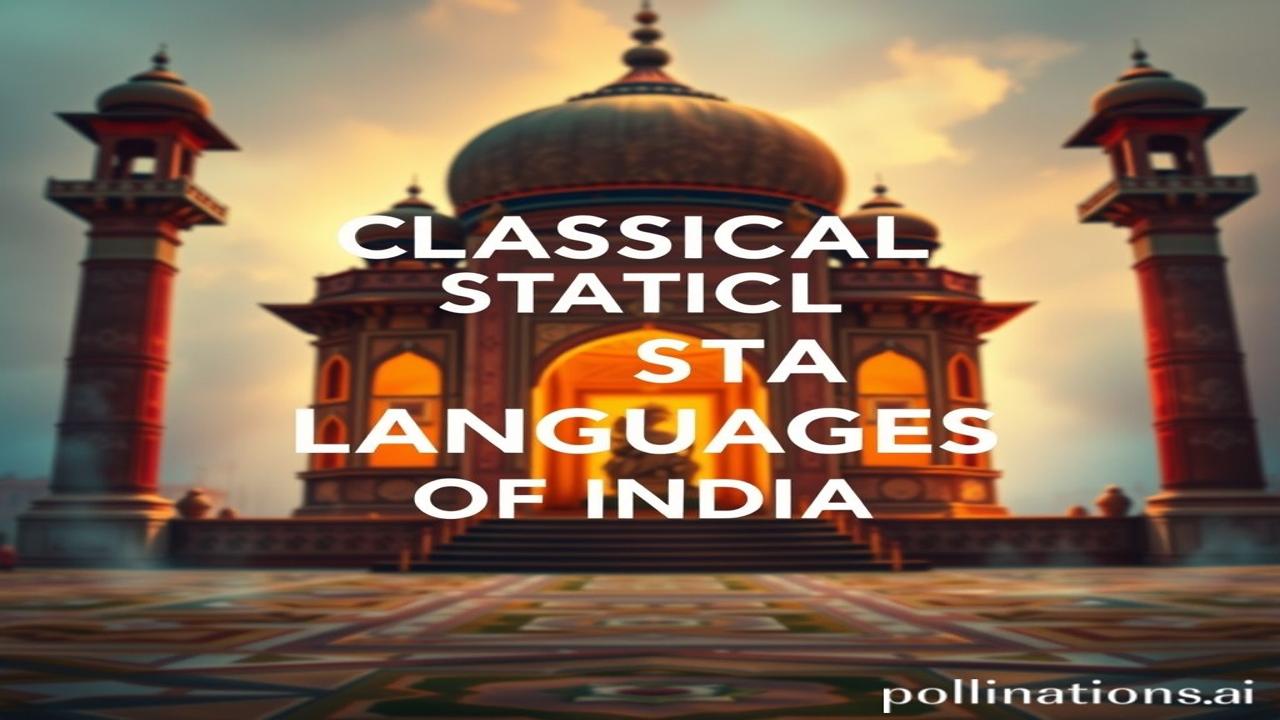Bharat Ki Shabdon Ki Virasat: Exploring India’s Classical Languages
Kabhi socha hai, hamari sanskriti ki gehraiyon mein, kitne shabdon ke khazane chhupe hue hain? Waqt ki dhool mein, kuch bhashayein (languages) aise chhup jaati hain, jo hamare itihaas (history) aur pehchan (identity) ko jodti hain. Aaj hum baat karenge unhi ‘Classical Languages’ ki, jo Bharat ki shaan hain.
Classical Language Kya Hai? Ek Nazar
Classical Language ek aisa samman hai jo kuch khaas bhashaoon ko diya jata hai, unki vishishtata aur purane itihaas ke liye. Ye sirf bhasha nahin, ye dharohar hai, ek jeevan ka tareeka hai. Bharat mein, sarkaar (government) kuch bhashaoon ko unki pratishtha aur prachinta ke adhar par ‘Classical Language’ ka darja deti hai.
Lekin, iska matlab kya hai? Basically, to get this status, a language has to prove certain things:
- High Antiquity: It should have a recorded history spanning 1500-2000 years.
- Originality: A significant portion of its literary tradition should be original and not borrowed from another community.
- Literary Tradition: It should have a rich and independent literary tradition.
Bharat Ki Classical Languages: Ek Virasat
Bharat mein, abhi tak chhe bhashaoon ko ‘Classical Language’ ka darja mila hai:
- Tamil (तमिल): 2004 mein declare hui. It’s one of the oldest languages in the world, going back over 2000 years.
- Sanskrit (संस्कृत): 2005 mein declare hui. Devo ki bhasha (language of the gods), the language of ancient texts like the Vedas and Upanishads.
- Telugu (తెలుగు): 2008 mein declare hui. A beautiful, melodious language spoken in Andhra Pradesh and Telangana.
- Kannada (ಕನ್ನಡ): 2008 mein declare hui. Spoken in Karnataka, a language with a rich literary and cultural heritage.
- Malayalam (മലയാളം): 2013 mein declare hui. Spoken in Kerala, known for its distinct identity and literature.
- Odia (ଓଡ଼ିଆ): 2014 mein declare hui. Spoken in Odisha, a language with a unique history and cultural significance.
Yeh bhashayein sirf shabd nahin hain; yeh hamari ‘संस्कृति’, hamari ‘कला’, hamari ‘ज्ञान’ ka pratibimb hain.
Zameeni Sach: Logon Ka Jeevan, Bhashaon Ka Ehsaas
Imagine, Raja Raja Chola ke zamane mein, ek Tamil kavi (poet) mandir mein baithkar kavita likh raha hai. “Ma Rukmini ne aaj naye kapde pehne, kyunki mandir mein utsav tha…”
Ya phir, ek Brahmin pandit, Sanskrit ke shlokon (verses) ka uchharan kar raha hai. “सर्वमंगल मांगल्ये शिवे सर्वार्थ साधिके । शरण्ये त्र्यंबके गौरी नारायणी नमोऽस्तुते ॥” – meaning praying to Goddess Durga.
These languages weren’t just for the elite; they were the language of the people, spoken in homes, in fields, and in markets.
Dharohar Aur Pehchan: Aaj Ke Bharat Mein
Aaj bhi, Classical Languages hamari ‘Bharatiyata’ ka ek aham hissa hain. Hamare rituals, art, architecture, festivals, aur values mein inka prabhav dikhta hai. For instance, you can see Sanskrit shlokas recited during weddings. Tamil is still vibrant in Tamil Nadu.
These languages connect us to our roots. They shape our modern identity.
Majedar Tathya Ya Bhram-Bhanjak: Surprising Facts!
Log samajhte hain ki Sanskrit ek ‘dead language’ hai, lekin asli sach yeh hai ki aaj bhi is bhasha mein log bolte hain, likhte hain, aur padhaate hain. There are Sanskrit villages where it’s the primary language!
Drishya Aur Bhavanaein: A Sensory Experience
Imagine walking through the streets of Madurai. The air smells of jasmine and spices. You hear the rhythmic chanting of Tamil hymns echoing from the Meenakshi Amman Temple. You see intricate carvings on the temple walls, telling stories from ancient epics.
Antim Vichar Ya Uddharan: Ek Soch
“भाषा वह दर्पण है जिसमें एक राष्ट्र अपनी आत्मा को देखता है।”
This means “Language is the mirror in which a nation sees its soul”. Let’s preserve these mirrors, these Classical Languages, so that future generations can see their own soul reflected in them. Jai Hind!
